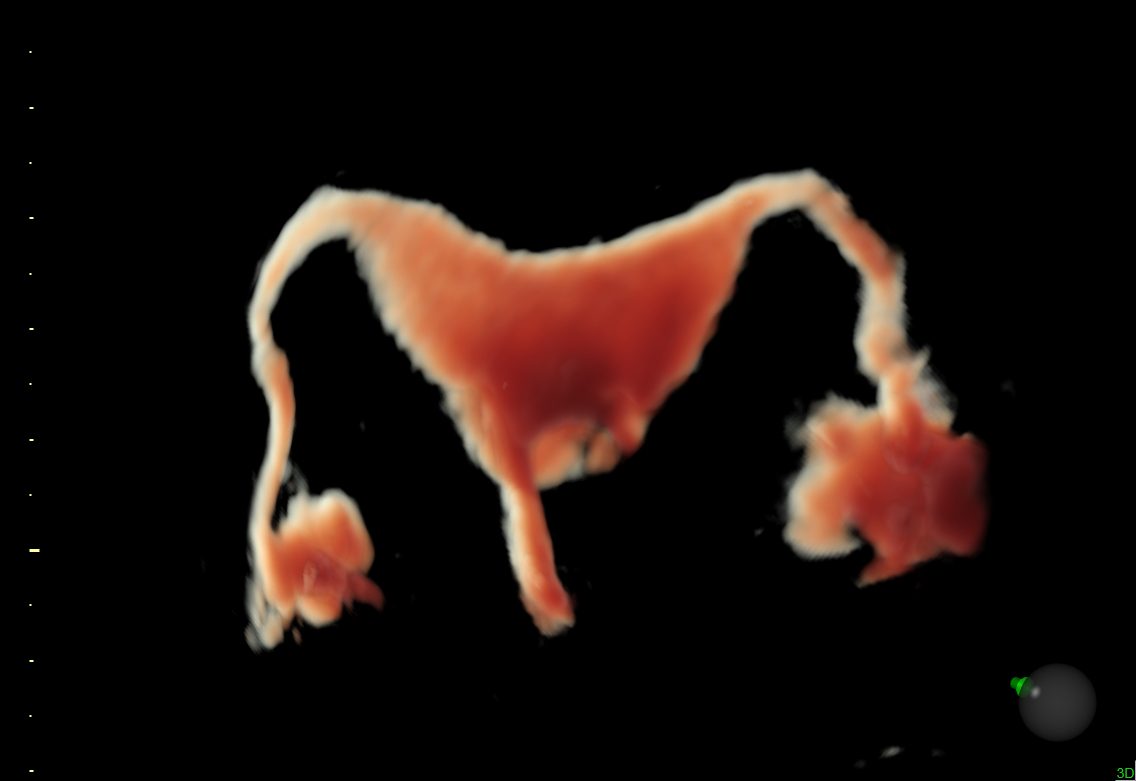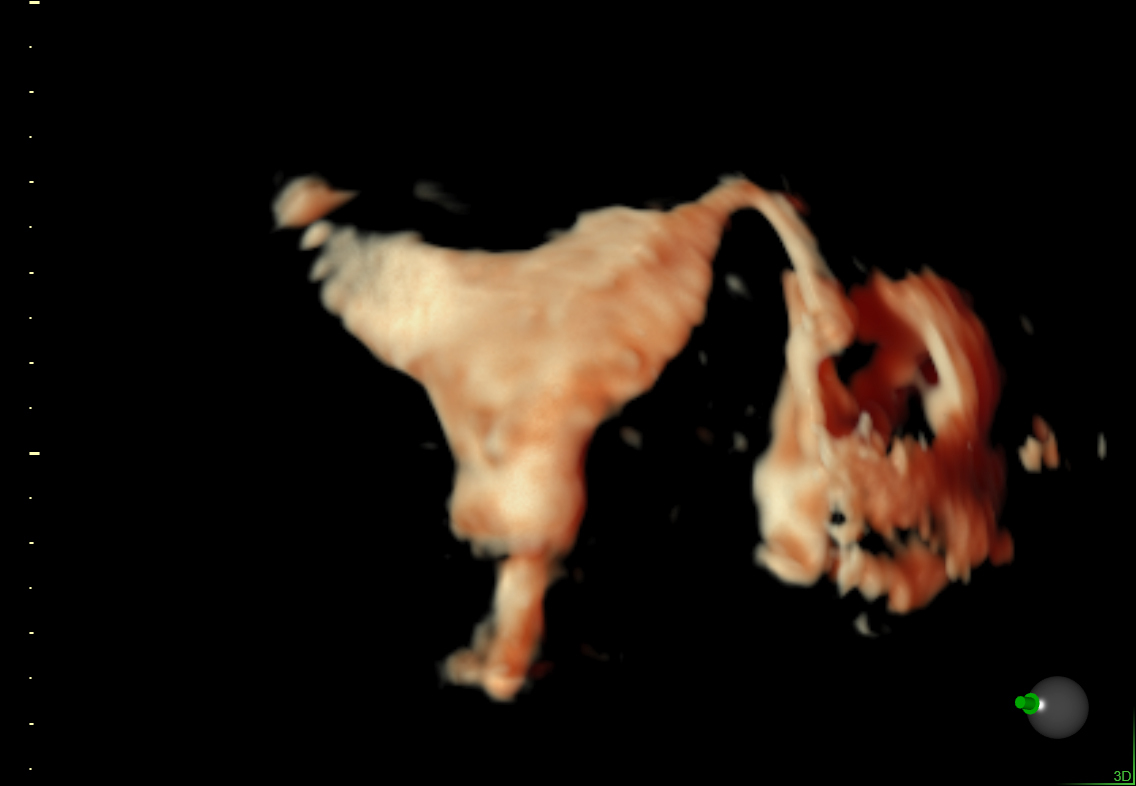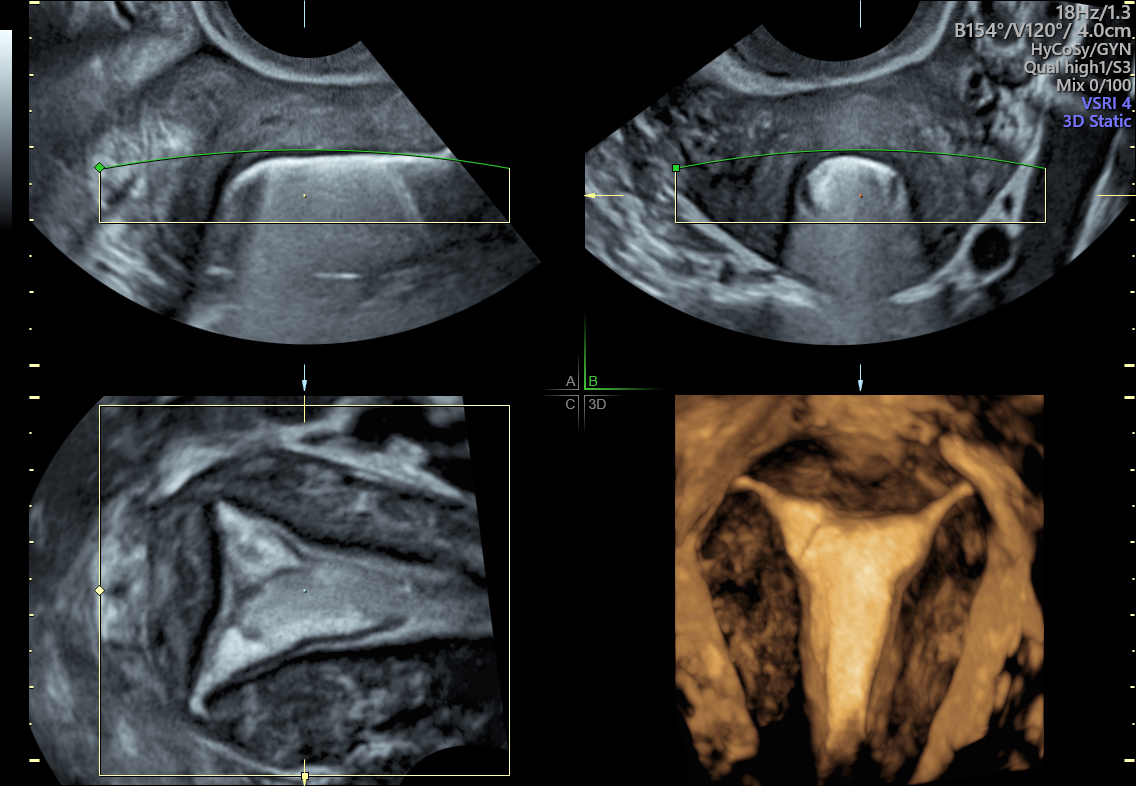Infertility can be attributed to many factors, from irregular menstrual cycles to previous cancer treatments. Tubal problems also play a role, which is why assessing a patient's tubal patency is crucial in evaluating their fertility. A study in the Journal of Reproduction and Infertility found that blocked fallopian tubes account for approximately 19 percent of primary subfertility and 29 percent of secondary subfertility cases. Luckily, a variety of ultrasound procedures are available to help examine the fallopian tubes inexpensively and in real time.
Although hysterosalpingography has historically been the go-to procedure, other methods — like hysterosonography — have proven to be great alternatives for evaluating tubal patency. All of the methods mentioned here are timed to take place after a patient's menstrual period ends but before ovulation. Here's what your patients can expect with each test.
Hysterosalpingography
Hysterosalpingography (HSG) uses a contrast dye and X-ray to do two things: evaluate the fallopian tubes for blockages and examine the uterus for abnormalities. A radiologist will start by placing a speculum into the vagina and cleaning the cervix. A local anesthetic can be injected to reduce potential pain. Next, a catheter will be inserted into the cervix, at which point the speculum is removed. Contrast dye is injected into the uterus and fallopian tubes through the cannula. After the dye has been released, the practitioner takes a series of X-rays. During this time the patient may be asked to change positions to record all the image angles the radiologist requires.
While HSG is generally considered safe by The American College of Obstetricians and Gynecologists (ACOG), many women find the experience painful, or may want to avoid undergoing a procedure that involves radiation. In addition to pain, your patients may experience side effects like vomiting, fainting and fever.
Hysterosonography
Hysterosonography, or saline infused sonography (SIS), uses ultrasound, fluid and sound waves to create images of a patient's uterus. Using fluid also allows a provider to determine tubal patency. Initially, a transvaginal ultrasound obtains an image of the uterine lining. Then, the doctor will insert a tube into the uterus, sending liquid through it to widen the uterus. The physician will then reinsert the transvaginal ultrasound probe, send more liquid through the tube and examine the uterus and fallopian tubes. Color Doppler can aid SIS by allowing a clinician to visually follow the flow of fluid into the uterus and fallopian tubes, according to research published in the Journal of Human Reproductive Sciences.
Hysterosonography is generally considered safe by ACOG, with a rare risk of pelvic infection. Unlike HSG, most women don't find this test painful.
Hysterosalpingo Contrast Sonography (HyCoSy) and Hysterosalpingo Foam Sonography (HyFoSy)
Hysterosalpingo contrast sonography uses a contrast dye and ultrasound to evaluate tubal patency. It is conducted after the menstrual period ends but prior to ovulation in order to avoid pregnancy and reduce the risk of infection. Though it's not routinely performed in the United States, HyCoSy is considered safe and effective.
The doctor or sonographer will start the HyCoSy procedure by performing a transvaginal ultrasound. Then, a long catheter will be inserted into the patient's uterus. Contrast dye is injected, and if the fallopian tubes are not open, the dye will not be visible over the ultrasound. If the tubes are open, the dye will be visible.

3D HyCoSy exam demonstrating two patent fallopian tubes.

3D HyCoSy exam demonstrating a single patent fallopian tube.
Research published in the journal Computer Assisted Surgery calls this method "a user-friendly, multidimensional technology...and a good way to evaluate fallopian tubal patency." However, patients who undergo HyCoSy are likely to experience pain afterward. Discuss the possible side effects with your patient, and make sure pain management is a priority if they opt to be tested.
Hysterosalpingo foam sonography (HyFoSy) also uses transvaginal ultrasound to evaluate tubal patency. Because fallopian tubes are not typically visible via ultrasound, sterile inert gel and sterile water are combined to create a foamy substance that reflects the ultrasound beam as bright white to get the desired imaging.

HyFoSy exam demonstrating a normal uterine cavity and the interstitial portion of the fallopian tubes.
Patients do not require anesthetic and are awake during the procedure. However, they should expect the procedure to last about 30 minutes and may have slight cramping or bleeding afterward. A study published in BMC Womens Health found that HyFoSy is substantially more cost-effective than HyCoSy.
Hysteroscopy
Hysteroscopy uses a light and camera inserted through the vagina and into the uterus. For the most part, a hysteroscopy is performed to evaluate a woman's uterus. However, doctors also can see the fallopian tube openings during this procedure, allowing them to consider or rule out proximal tubal occlusion.
Depending on the complexity and length of the procedure, a hysteroscopy might take place at a fertility clinic, a surgical center or a hospital. The patient might be fully awake, under light anesthesia or under general anesthesia.
The hysteroscopy begins with the doctor dilating the patient's cervix, then inserting the hysteroscope through the cervix and into the uterus. A gas or liquid is sent through the hysteroscope to help expand the uterus for evaluation. If an abnormality is discovered and the patient is already under anesthesia, the physician may be able to correct it right then and there, eliminating the need for another procedure.
Again, although generally considered safe by ACOG, hysteroscopy is not without risks, including infection, uterine scarring, heavy bleeding and anesthesia-related side effects. It's important to note that patients who undergo a hysteroscopy without anesthesia may find it extremely painful.
Because tubal disease causes subfertility in so many women, ruling it out should be standard procedure for all reproductive endocrinologists. Although there are several ways to do this, each with its own set of risks, procedures using ultrasound provide an excellent method for assessing tubal patency.
Disclaimer: HyCoSy is not cleared in the United States and may not be available in all other countries.


